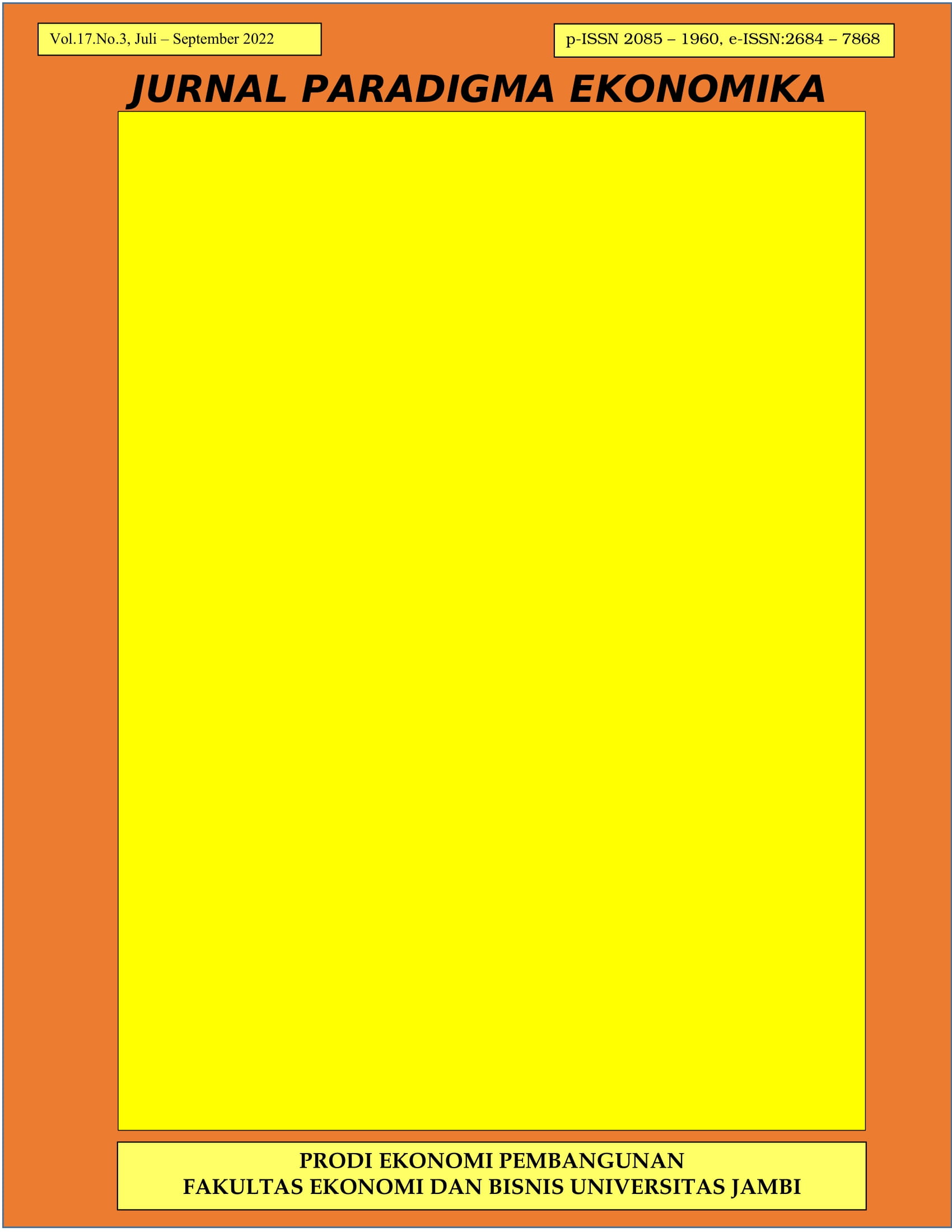Analisis sektor unggulan Kota Jambi dalam menghadapi Pandemi Covid-19
DOI:
https://doi.org/10.22437/jpe.v17i3.17268Keywords:
economic potential, LQAbstract
In the years 2016-2019, Jambi City economic growth rate was higher than the Jambi Province and National data, but in 2020, it dropped by 8.07 percent and was lower than the Provincial and National figures. The goal of this study is to identify and describe the major revenue-generating industries and competitiveness sectors in the local economy. Then, on pandemic situation, an examination of the leading and competitive sectors with the potential for development is carried out. In the 2016-2020 timeframe the transportation and warehousing industry is the leading sector with the highest average, according to the results of the LQ analysis. According to the SS research, the largest percentage change is in the power and gas procurement sector. The results of the identification can be utilized to assist additional study in order to help the Jambi City economy accelerate and recover in the face of the COVID-19 pandemic.
Downloads
References
Abd. Rahman, R., Sabir, & Arsyad, M. (2020). Leading sectors and regional specialization: Learn from indonesian economy. International Journal of Advanced Science and Technology, 29(6), 1650–1663.
Al Umar, A. U. A., Lorenza, L., Savitri, A. S. N., Widayanti, H., Taufiqi, M., & Mustofa, L. (2019). Pengaruh Inflasi, PDRB, dan UMK terhadap tingkat pengangguran di Provinsi Jawa Tengah Tahun 2017-2019. Sumber, 4(49).
Bidarti, A. (2020). Teori kependudukan. Lindan Bestari.
Chong, T. T. L., Li, X., & Yip, C. (2021). The impact of Covid-19 on ASEAN. Economic and Political Studies, 9(2). https://doi.org/10.1080/20954816.2020.1839166
Creswell, J. W., & Clark, V. L. P. (2017). Designing and conducting mixed methods research. Sage publications.
Daryanto, Arief & Hafizrianda, Y. (2018). Model-model kuantitatif untuk perencanaan pembangunan ekonomi daerah: konsep dan aplikasi. In IPB Press.
Dynan, K., & Sheiner, L. (2018). GDP as a measure of economic well-being. Hutchins Center on Fiscal & Monetary Pol Icy At Brookings, 43, 1–53.
Hidayah, R. A. D. N., & Tallo, A. J. (2020). Analisis ekonomi Provinsi Jawa Tengah Periode 2015-2019 dengan metode Indeks Williamson, Tipologi Klassen dan Location Quotient. Jurnal Ilmu Pendidikan Nonformal: AKSARA, 6(3), 339-350.
Mo, S. W., Lee, K. B., Lee, Y. J., & Park, H. G. (2020). Analysis of import changes through shift-share, location quotient and BCG techniques: Gwangyang Port in Asia. Asian Journal of Shipping and Logistics, 36(3), 145–156. https://doi.org/10.1016/j.ajsl.2020.01.001
Mogila, Z., Ciolek, D., Kwiatkowski, J. M., & Zaucha, J. (2021). The baltic blue growth – A country-level shift-share analysis. Marine Policy, 134(August), 104799. https://doi.org/10.1016/j.marpol.2021.104799
Putri, A. M. S. (2019). Potensi wilayah beberapa daerah di Indonesia dan cara mengembangkan potensi wilayah agar bermanfaat bagi warga sekitar. Jurnal Wilayah dan Lingkungan, XX(November), 1–21.
Downloads
Published
How to Cite
Issue
Section
License
Copyright (c) 2022 Rio Gabriel Simamora

This work is licensed under a Creative Commons Attribution-ShareAlike 4.0 International License.









